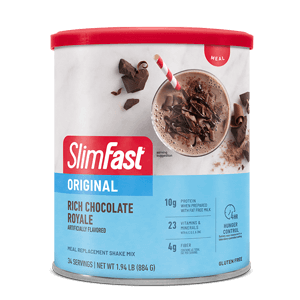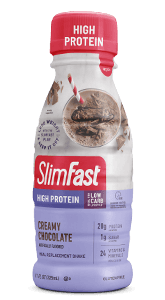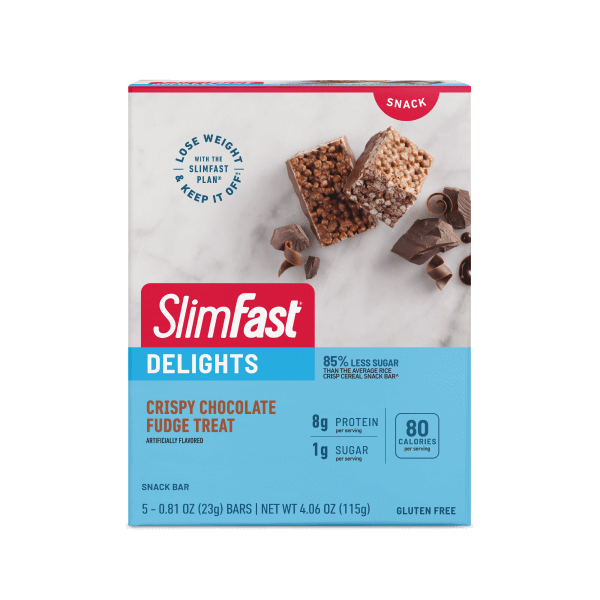
Registered Dietitian and SlimFast Nutritional Consultant, Maryann Walsh us takes us through the basics of creating and establishing SMART goals and how to stick to them. Keep reading to learn more!
The new year is well underway and hopefully you are still reeling with excitement and the hope that many of us feel as we embark upon a new year with new possibilities for achieving our best selves! If you have lost some of your motivational steam since the clock struck midnight on January 1st, then don’t be hard on yourself because you are not alone, research suggests that 23% quit their resolution by the end of the first week1 and 43% quit by the end of January2. Let’s face it, life can be stressful and exhausting, juggling family and work obligations can make it hard to prioritize those goals we were so excited about just a few weeks ago. But, have no fear, it’s time to reignite our goals and maybe even gain a little perspective shift when it comes to new years resolutions, let’s begin:
Imperfect Consistency over Inconsistent Perfection
Nobody’s perfect, not even those seemingly perfect people you see on social media. We all face obstacles in life that can derail us from our path that we set for ourselves to achieve a particular goal. Some of these obstacles may be curveballs in our schedule like if a family member gets sick and we can’t make it to the gym that week, or it’s our child’s birthday party and we can’t resist a delicious piece of the birthday cake we bought from our favorite bakery. Our goals need to allow for life to happen, so we can be there for the ones we love and so we can enjoy the “sweeter” things in life like that yummy piece of cake as we celebrate someone we love. If we are so focused on perfection that we throw in the towel completely on our goals because of minor slip ups here and there, then we can often find ourselves back at square one again, feeling frustrated and defeated. However, if we allow for consistent imperfection then we can handle speed bumps on our journey to our goal and then get right back on our path to success.
One common scenario I have seen with individuals in my many years as a Registered Dietitian is that they want to drastically cut calories so that they can lose weight faster, when in reality, they often find themselves overly hungry and fatigued and unable to stick with their extreme calorie deficit. Whereas those who aim for a realistic calorie deficit that is manageable for them allows them to stick with their plan and lose weight at a slow and steady pace over time.
I have seen the same for exercise: many people feel like they need to go sign for up for strenuous workout classes and go 5 times a week in order to achieve better physical fitness, when in reality if they haven’t done any type of workout in years and they work a traditional 9-5 job, they may find themselves exhausted and unable to stick to that routine. Those who set a more realistic goal of perhaps trying one of those classes once a week and then aiming for 2-3 days where they go for a walk at lunchtime might find it easier to stick to their goal overtime. Slow and gradual results are much better than no results because you quit after a week! And, the best part is that as time goes on we can always set new goals so we can continue to grow and to challenge ourselves.

Setting SMART Goals
If everything discussed above sounds good to you, but you aren’t sure where to start, then I’d like for you to stick around just a little bit longer as we discuss SMART goals. You may have heard of SMART goals before, the SMART framework can be used in various settings including behavioral health, business and in this situation, nutrition and exercise.
SMART stands for: Specific, Measureable, Attainable, Relevant and Timebound. I am going to explain how to set SMART goals using two examples!
Let’s say you want to lose 10lbs and exercise more:
1. I am going to track my daily calorie intake with a tracking app 5 days a week for 2 weeks.
This goal is:
Specific, because it states what you are specifically going to do, which is track daily calorie intake for 5 days a week for 1 month versus just saying “I want to eat better.”
Measurable because you can measure how well you did with this goal by seeing how many days you actually tracked when you get to the end of the week.
Attainable if you have a smartphone and are able to download a free tracking app and track everything you eat and drink throughout the day.
Relevant because you are hoping to lose weight and to exercise more. (Note: this one is important, because sometimes we set goals based on what we see other people doing, when in reality these goals may not be realistic or relevant to our individual lives)
Timebound: we set a 1 month limit, so when we reach that 1 month mark we can assess how we did and adjust accordingly/ set a new SMART goal to continue on towards our over-arching goal of wanting to lose weight.
2. I am going to go for a 20 minute walk at lunchtime 3 times a week for 1 month.
This goal is:
Specific because it states that you specifically are going to walk for 20 minutes at lunchtime 3 days out of the week, versus just saying “ I want to walk more at lunchtime.”
Measurable: you can measure how well you did by adding up how many days you walked when you get to the end of the week.
Attainable: this is an attainable goal if you have a safe place to walk at lunch that is easily accessible to you.
Relevant: This is a relevant goal if you are trying to start exercising more but you haven’t exercised much in the past few years and you aren’t able to get in exercise after work for whatever reasons.
Timebound: You set this goal for 1 month, after the month is up you can assess how you stuck to this goal and then either add to this goal or set a a slightly more challenging goal.
Tying it all together
As you can see, by setting SMART goals, you are taking goals that can sometimes be too general and writing them in a format which makes them specific and something that you can take action on. The possibilities are really endless and again, when we aim for imperfect consistency (as in 3 days of walking versus 7 days) we can really set ourselves up for long-term and sustainable success!
References:
- Norcross, J. C., & Vangarelli, D. J. (1988). The resolution solution: longitudinal examination of New Year's change attempts. Journal of substance abuse, 1 (2), 127–134. https://doi.org/10.1016/s0899-3289(88)80016-6
https://pubmed.ncbi.nlm.nih.gov/2980864/ - Dickson, J. M., Moberly, N. J., Preece, D., Dodd, A., & Huntley, C. D. (2021). Self-Regulatory Goal Motivational Processes in Sustained New Year Resolution Pursuit and Mental Wellbeing. International journal of environmental research and public health, 18 (6), 3084. https://doi.org/10.3390/ijerph18063084
https://pubmed.ncbi.nlm.nih.gov/33802749/




